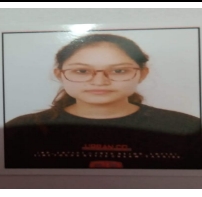Abstract
The aim of present investigation was undertaken with the objective of formulating buoyant tablet of Tolperisone HCl. Tolperisone HCl is a skeletal muscle relaxant. Drug is more stable in acidic medium (pH < 4.5), and in alkaline medium (pH 4 to 7) tolperisone breaks downinto4-MMPPO[2methyl-1-(4methylphenyl)-propanone] and piperidine. Thus, the patient is exposed to an uncontrollable quantity of genotoxic agent 4-MMPPO. 32 full factorial designs were used for optimization of formulation variable. The drug: polymer ratio (X1) and concentration of sodium bicarbonate (X2) were selected as independent variables, while time required for drug release 50% (t50), time required for drug release 90% (t90), drug release at 12hr (Q12), Floating lag time, release rate constant (k) and diffusion exponent (n) were selected as a dependent variable. Prepared tablets were evaluated for pre compression and post compression parameters. The release mechanisms were explored and explained by applying zero order, first order, and Higuchi and Korsmeyer equations. Regression analysis and analysis of variance were performed for dependent variables. Optimized formulation (B6) showed 99.27% drug release at the end of 24 hrs and maximum similarity factor (f2= 74.41) and minimum dissimilarity factor (f1= 4.24) with theoretical release profile of Tolperisone HCl. Optimized formulation followed by anomalous nonFickian release mechanism and found to be stable after 21 days at accelerated condition.
Keywords
Tolperisone Hcl, Floating Matrix agent.
Introduction
The gastro retentive drug delivery system can be retained in the stomach and assist in improving the oral control delivery of drug that have an absorption window in a particular region of the gastrointestinal tract. This system helps in continuously releasing the drug, thus ensuring optimal bioavailability. The matrix tablet composed of drug and the release retarding material offers the simplest approach in designing of control release system. Skeletal muscle relaxants are drug that acts peripherally at neuromuscular junction or muscle fibre itself or centrally in the cerebrospinal axis to reduce the muscle tone. Centrally acting muscle relaxants are used mainly for painful muscle spasm and spastic neurological condition Tolperisone HCl causes muscle relaxation by its action on central nervous system. It also leads to membrane stabilizer and has analgesic activity.
MATERIALS
Tolperisone. Xanthan, Gum, Guar Gum and Dibasic calcium phosphate (DCP).Sodium bicarbonate, Magnesium stearate, Talc.
METHOD-
Preparation of Tolperisone HCl Buoyant Tablets
Direct Compression-
Direct compression was followed to manufacture the gas generating buoyant tablets of Tolperisone HCl. All the ingredients were accurately weighed and
pass through sieve no. 60 before using into formulation. Compressed on 10 station rotary tablet machine using caplet punch. The tablets were compressed to obtain hardness in a range of 6-7 Kg/cm2.
Evaluation of Powder Blend and Tablets Drug-Excipients Compatibility study.
Fourier transform infrared spectroscopy has been used to study the physical and chemical interaction between drug and the excipients used. Fourier transform infrared (FTIR) spectra of Tolperisone hydrochloride, Xanthan Gum were recorded using KBr mixing method.
Loose Bulk Density
Weigh accurately 5 gm of powder blend, and transferred in 100 ml graduated cylinder. Carefully level the powder blend without tcompacting, and read the unsettled apparent volume (V0). Calculate the apparent bulk density in gm/ml by the following formula: Bulk Density = Mass/ apparent volume Tapped
Bulk Density
Weigh accurately 5 gm of powder blend, and transferred in 100 ml graduated cylinder. Then mechanically tap the cylinder containing the sample by raising the cylinder and allowing it to drop under its own weight using mechanically tapped density tester that provides a fixed drop of 14±2 mm at a nominal rate of 300 drops per minute. Tap the cylinder for 500 times initially and measure the tapped volume (V1) to the nearest graduated units, repeat the tapping an additional 750 times and measure the tapped volume (V2) to the nearest graduated units, if the difference between the two volumes is less than 2% then final the volume (V2). Calculate the tapped bulk density in gm/ml by the following formula:
Tapped Density = Mass/ tapped volume
Carr’s Index
The Compressibility Index of the powder blend was determined by Carr’s compressibility index. It is a simple test to evaluate the Bulk Density and Tapped Density of a powder blend and the rate at which it packed down. The formula for Carr’s Index is as below:
Carr’s Index = Tapped Density-Bulk
Density×100/ Tapped Density
Hausner’s Ratio
The Hausner’s ratio is a number that is correlated to the flowability of a powder blend material.
Hausner’s Ratio = Tapped Density/Bulk Density.
Angle of Repose
The angle of repose of powder blend powder was determined by the funnel method. The diameter of the powder blend cone was measured and angle of repose was calculated using the following Equ. Angle of Repose.
() = tan-1h/r
Where, h =Height of the powder blend cone r =Radius of the powder blend cone.
Weight Variation Test
The 20 tablets were selected at random, weighed and the average weight was calculated. Not more than two of the individual weights should deviate from the average weight by more than 10%
Fribility
For each formulation, pre weighed tablet sample (10 tablets) were placed in the Roche friabilator which is then operated for 100 revolutions. The tablets were deducted and re-weighed. Conventional compressed tablets that loose <0>
Hardness
Hardness of tablet was determined using Monsanto hardness tester. Content Uniformity The20tabletswerecrushedandthepowderequiv alentof100mg of drug was transferred to100ml of 0.1N HC1 in volumetric flask. The solution was analyzed at 261 nm using double beam UV-Vis spectrophotometer after suitable dilution. The content of drug was calculated from calibration curve.
In-vitro buoyancy study
The In-vitro buoyancy was characterized by floating lag time (FLT) and total floating time (TFT). The test was performed using USP24 type II paddle apparatus using 900 ml of 0.1 N HC1 at 50 rpm at 37±0.5°C. The time required for tablet to rise to surface of dissolution medium and duration of time the tablet constantly float on dissolution medium were noted as FLT and TFT, respectively.
In vitro drug release study
The In vitro drug release was performed using USP-24 type II paddle apparatus in
900 ml of 0.1N HC1 at 50 rpm at 37 ± 0.5°C. The samples were withdrawn at pre- determined time intervals for period of 24 hr and replaced with the fresh medium. The samples were filtered through 0.45µm membrane filter suitably diluted and analyzed at 261 nm using double beam UV- Vis spectrophotometer. The content of drug was calculated using calibration curve. Kinetic model for release data The drug released data of all batches were fitted with desired kinetic model such as Zero order kinetic, First order kinetic, Higuchi model and Korse meyer peppas model to ascertain the drug release. The Zero order and First order drug release. The Zero order and First order drug release explain the drug release depend on drug concentration or not. The Korse meyer peppas model described the method of drug release and Higuchi model described the diffusional drug release.
Zero order = Q1 = Q0 + K0t
First order = Qt = Q -K1t
Higuchi model = m= (100-q) ×t1/2
Kinetic model for release data
The drug released data of all batches were fitted with desired kinetic model such as Zero order kinetic, First order kinetic, Higuchi model and Korse meyer peppas model to ascertain the drug release. The Zero order and First order drug release. The Zero order and First order drug release explain the drug release depend on drug concentration or not. The Korse meyer peppas model described the method of drug release and Higuchi model described the diffusional drug release.
Zero order = Q1 = Q0 + K0t
First order = Qt = Q -K1t
Higuchi model = m= (100-q) ×t1/2.
Dissimilarity factor
The dissimilarity factor (f1) calculates the percent difference between the two curves at each time point and is a measurement of the relative error between the two curves. The values should lie between 0-15.For curves to be considered similar f1 values should be close to 0.
RESULTS AND DISCUSSION
the drug and polymer were compatible with each other.The powder mixture used for tablet preparation were evaluated for pre- compression parameter like bulk density, tapped density, Hausner’s ratio,Carr’s index, andangle of repose. Tolperisone HCl floating tablets were prepared and evaluated for hardness, friability and drug content uniformity. From the dissolution profile it was observed that there was significant outcome of different polymers and polymer load on drug release. All batches exhibit initial burst release of drug due to rapid dissolution of drug from tablet surfaceThe kinetics of the dissolution data were well fitted to zero order, Higuchi model and Korsmeyer-Peppas model as evident from regression coefficients .
CONCLUSION
The present investigation was aimed to formulate and evaluate floating tablet of Tolperisone HCl were prepared by direct compression method based on natural polymers (e.g. Xanthan Gum and Guar Gum) as matrix forming material and different concentration of sodium bicarbonate as gas generating agents.FTIR spectroscopy indicates that the drug is compatible with the polymer. The concentration of Xanthan Gum and sodium bicarbonate were successfully optimized by using 32 factorial design. From the 32 factorial design and different graphical representation, it was finalized that batch B6 was found to be optimized batch having drug release up to 24 hr. More ever, the dissolution profile of optimized batch B6 was found to be similar with theoretical drug release profile having similarity factor more than 50 (f2=74.41) and dissimilarity factor less than 15 (f1=4.24) which reflects the feasibility of the optimization procedure in successful development of floating matrix tablet containing Tolperisone HCl by using Xanthan Gum.
REFERENCES
- Tripathi KD. 2006. Essential of Medical Pharmacology; 6th Edn; Jaypee Brothers Medical Publisher LTD, pp339.
- Welzig s, Rothenburger J, Kalz B, Gungl J, Gerdes K. 2007. Tolperisone hydrochloride controlled release tablet. United State Patents USP 20100249423.
- Chatwal GR., Anand SK, 2002. Instrumental Method of Chemical Analysis; 5thEdn; Himalaya Publishing House, 82, pp 29-30.
- Flese EF., Hugen TA., and Lachman L.1987. In Preformulation; The theory and Practice of Industrial Pharmacy; 4th Edn; Varghese Publishing House, Mumbai, pp 171.
- Wells JI.Aulton ME, 2002. In Preformulation; Pharmaceutics the Science of Dosage Form Design; 2nd Edn; Churchill Livingstone, pp 223.
- Cooper J, Gun C, Carter SJ, 1986. In Powder Flow and Compaction; Tutorial Pharmacy; CBS Publishers and Distributors, pp 211.
- MartinA, 1997. In Micromeretics;Physical Pharmacy; 4thEdn; B.I.Waverly Pvt. Limited, pp 423.
- Indian Pharmacopoeia, 2010. Volume I, TheIndian Pharmacopoeia Commission, Ghaziabad, India, 6thEdn. 192-193.
- Patel V F, Patel N M, Yeole P G, 2005. Studies on formulation and evaluation ranitidine floating tablets. Ind. J. Pharm. Sci., 67(6), 703-709.
- Coasta P, Manuel J, Labao S.2002.Modelling and comparison of dissolution profiles. Euro. J. Pharma. Sci., 13, 123-133.
- Higuchi T, 1961. Rate of release of medicament from ointment bases containing drugs in suspension. J. Pharm. Sci. 50, 874.
- Hixon A W, Crowell J H, 1931.Dependence of reaction velocity upon surface and agitation theoretical consideration. Ind. Eng. Chem., 23, 923.
- Korsemeyer RW, Ginnu R, Doelker E, Buri P, Peppas NA, 1983.“ Mechanism of solute release from porous hydrophilic polymers. J. Pharm., 15, 25.
- Costa P , 2001 .An alternative method to evaluation of similarity factor in dissolution testing. Int. J. Pharm., 220.77-83.


 Shweta Negi * 1
Shweta Negi * 1
 Vikas Dhawan 2
Vikas Dhawan 2
 10.5281/zenodo.10837434
10.5281/zenodo.10837434